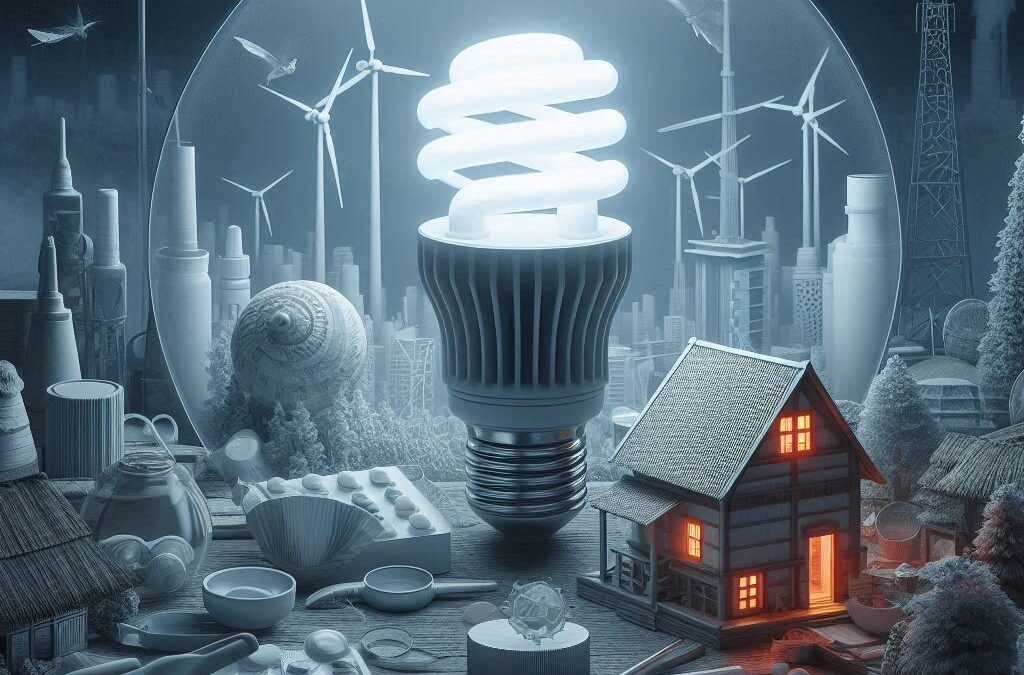In a Nutshell
LED lights may be energy-efficient and long-lasting, but according to researcher Alexander Wunsch, they can negatively affect your health if not chosen carefully. His studies highlight how LED lights can disrupt sleep patterns, strain eyes, and emit harmful blue light that affects your overall well-being. But not all LED lights are created equal—by understanding the right specifications, you can minimize these risks while still benefiting from their efficiency. Let’s dive into what makes LEDs potentially harmful and how to pick healthier options.
1. Disrupting Sleep and Circadian Rhythms
Alexander Wunsch, a leading expert in photobiology, warns that LED lights—especially those with a high blue light content—can suppress the production of melatonin, the hormone responsible for regulating sleep. This disruption can lead to insomnia, fatigue, and long-term health issues like depression or metabolic imbalances.
Key Takeaway: Exposure to LED lights, particularly in the evening, may trick your brain into thinking it’s daytime, throwing off your body’s natural rhythms.
2. Eye Strain and Retinal Damage
The intense blue light emitted by many LED bulbs is known to cause digital eye strain and may contribute to retinal damage over time. Wunsch’s research indicates that prolonged exposure to blue light increases oxidative stress on the retina, potentially accelerating macular degeneration.
Pro Tip: Use LED lights with a lower color temperature (measured in Kelvin) to reduce blue light exposure and protect your eyes.
3. Flicker: The Unseen Stressor
Many LED lights flicker at high frequencies, invisible to the naked eye but still detectable by your brain. Wunsch points out that this flicker can cause headaches, fatigue, and even increase stress levels. Flicker-sensitive individuals may experience discomfort even with brief exposure.
How to Choose Healthier LED Lights
To mitigate the negative effects of LED lights, follow these guidelines when selecting them for your home or workspace:
- Choose Warm Light (Below 3000K):
Opt for LEDs with a lower color temperature, around 2700K–3000K, to mimic the warmth of natural sunlight. This reduces blue light exposure and is easier on your eyes and sleep cycle. - Look for Flicker-Free LEDs:
Select LED bulbs labeled as “flicker-free” or those with low flicker rates. These are often higher-quality LEDs that use advanced circuitry. - Use Full-Spectrum LEDs:
Full-spectrum LEDs closely mimic natural sunlight by balancing blue, green, and red wavelengths. This reduces eye strain and improves overall lighting quality. - Adjustable or Dim-to-Warm LEDs:
Consider LEDs that allow you to adjust brightness and color temperature. Dim-to-warm LEDs automatically shift to warmer tones as they are dimmed. - Avoid Cool White and Daylight LEDs:
While these are common in offices and homes, their high blue light content can be detrimental to health. Use them sparingly or in areas with minimal evening use.
Practical Tips for LED Use
- Install Dimmers: Control light intensity and reduce brightness during evening hours.
- Limit Nighttime Exposure: Use orange-tinted glasses or install blue light filters on your devices to reduce exposure.
- Create Zones of Light: Use warmer LEDs in bedrooms and cooler (but safe) ones in workspaces during the day.
- Supplement with Natural Light: Whenever possible, prioritize daylight exposure during the day to counteract artificial lighting effects.
Closing Thoughts
While LED lights have revolutionized how we light our homes and workplaces, not all of them are friendly to your health. By understanding the risks outlined by experts like Alexander Wunsch and making informed choices about color temperature, flicker, and spectral quality, you can enjoy the benefits of LEDs without sacrificing well-being.
Sources:
- Alexander Wunsch’s TEDx Talk: “The Hidden Dangers of LED Lighting”
- “Health Effects of Blue Light Exposure.” Journal of Photobiology, 2021.
- “How LED Flicker Impacts Human Health.” Lighting Science Insights, 2020.

